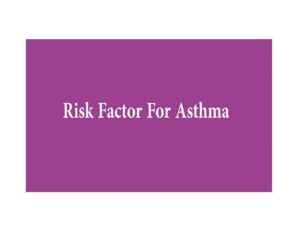Asthma in children must be treated aggressively
Childhood Asthma
Asthma is a Global Health Issue
Exact Cause of childhood asthma Asthma is Unknown
It isn’t clear why some people get asthma and others don’t. The causes of asthma is not due to a single factor but may be due to complex interaction of multiple factors including a combination of environmental and genetic (inherited) factors.
Triggers of Asthma
Exposure to various irritants, chemicals and substances (allergens) can trigger symptoms of asthma. These triggers include:
- Airborne substances, such as pollen, dust mites, mold spores, pet dander or particles of cockroach waste
- Respiratory infections, such as the common cold
- Cold air
- Physical activity
- Air pollutants and irritants, such as smoke
- Certain medications, including beta blockers, aspirin, ibuprofen etc
- Strong emotions and stress
- Sulfites and preservatives added to some types of foods and beverages, including shrimp, dried fruit etc
- Gastroesophageal reflux disease (GERD)
The following are the factors which are associated with the increase incidence of asthma-
- Genetic factor:
There are several genes identified which may be associated with increased risk of asthma. Family history of atopy or some form of allergic disease will increase the likelihood of allergy in child.
- Allergic rhinitis:
Allergic rhinitis is a major risk factor for development of asthma. Children who has allergic rhinitis are at increased risk of asthma in later life.
-
Allergen sensitization and exposure:
Sensitization to the environmental allergen is strongly associated with the development of childhood asthma. However, allergen avoidance measure in already developed case of asthma is a debatable issue and is it advisable to avoid allergen whenever possible.
-
Smoking
Exposure to cigarette smoke is a major risk factor for wheezing illness in children. Maternal smoking during pregnancy significantly increases the risk of wheezing in early childhood. However, these factors may not increase the risk of atopic asthma later in life.
Phenotypes of Asthma
- Pre-asthma wheezing: These phenotypes mainly occur in infant and pre-school children. It may be episodic due to virus or trigger by multiple factors.
- Allergic asthma: most common phenotype. This variety of asthma often occurred in childhood and is associated with a past and/or family history of allergic disorders like such as eczema, allergic rhinitis, or food allergy. This phenotype responded well with inhaled corticosteroid (ICS) treatment.
Symptoms of Asthma
If someone has asthma his airways become swollen and the muscles around the airways can tighten due to inflammation of the airways.
This swelling and tightening of muscles around the airways lead to difficulty for air to move in and out of the lungs, causing classical symptoms of asthma.
These includes
- Coughing,
- Wheezing,
- Shortness of breath and/or chest tightness.
Symptoms of asthma are often worse at night or in the early morning times and during walking. Symptoms are often triggered by allergens, cold air, viral infections , exercise, laughter.
Diagnosis of Asthma
The diagnosis of asthma is based on clinical symptoms and lung function test. Spirometry is an objective and reproducible test to determine the lung function. In this test the patient need to take a deep breath and then suddenly blow into a sensor to measure the amount of air in the lungs can hold and the speed of the air you inhale or exhale.The diagnosis of asthma is can be made by demonstrating the presence of reversible airway obstruction. This test diagnoses asthma along with the severity of asthma. Repeat test can be done to see the treatment response. This test can not be done in children 6 years of age.
Treatment of Asthma
Till date there is no cure for asthma. But the symptoms can be controlled with proper management. The management of asthma includes asthma education and learning to avoid asthma triggers. Medications include Reliever and controller medication.
Reliever / Rescue medications-
These medications are those which quickly relax airways and thereby relieve the symptoms of asthma. These include short-acting beta-agonists (SABA) medication like salbutamol or levosalbutamol. They can be used as and when required basis.
Controller medications-
These medications are taken daily as a maintenance therapy. They reduce airway inflammation, control symptoms, reduced asthma exacerbations and improve lung function. These include inhaled corticosteroids (ICS) like budesonide, fluticasone, mometasone beclomethasone etc.
Combination Therapy-
Combination inhalers contain an inhaled corticosteroid and a long-acting beta-agonist (LABA) medicine. These medications include fluticasone and salmeterol, budesonide and formoterol, and mometasone and formoterol.
Other medications include-
Anticholinergics are inhaled medications medication like tiotropium.
Leukotriene modifiers like montelukast, zafirlukast.
Oral and intravenous corticosteroids like prednisone and methylprednisolone, used in acute exacerbation of asthma.
Monoclonal antibody– Anti IgE Antibody- omalizumab. Can be used for allergic asthma.



